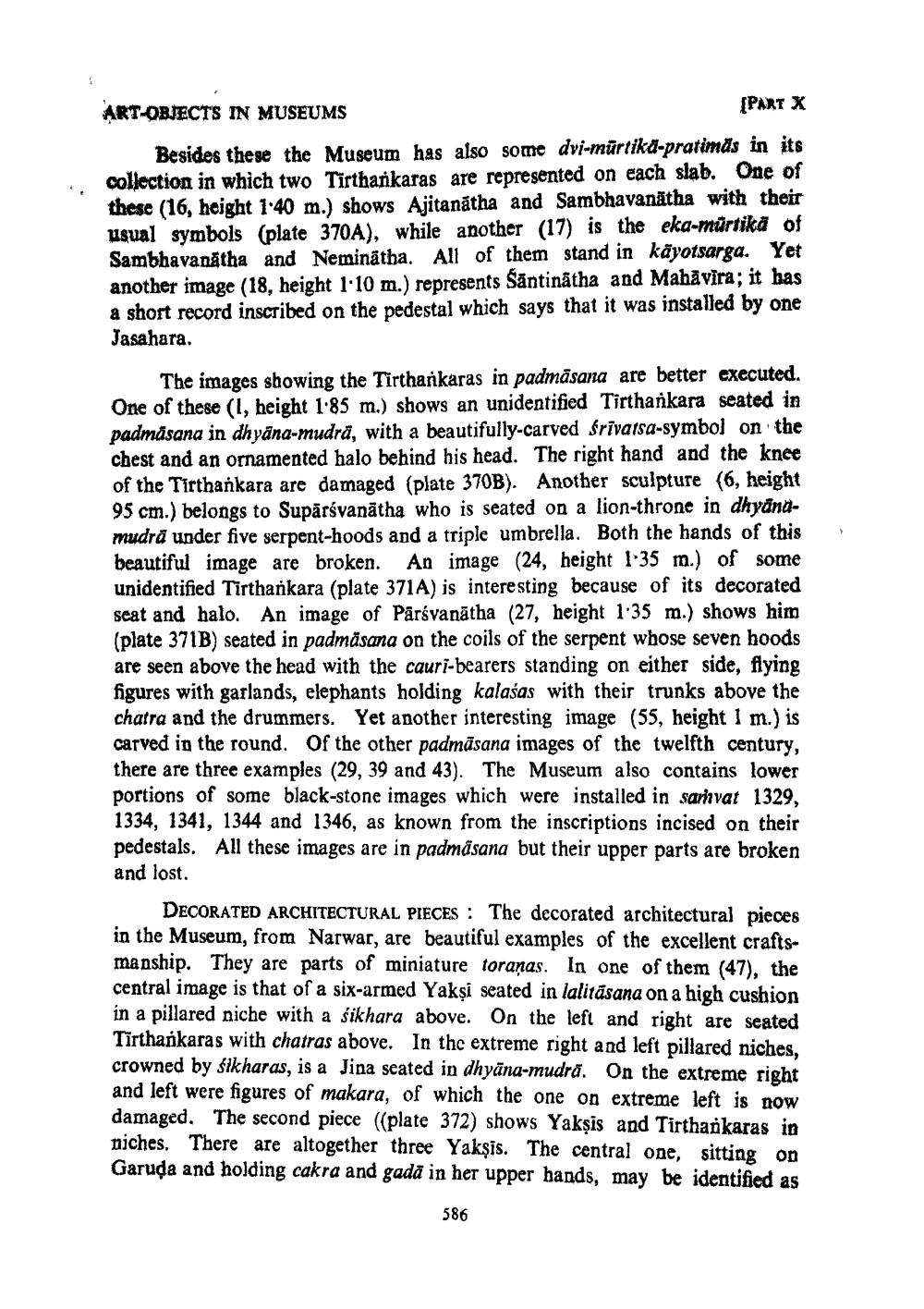________________
ART-OBJECTS IN MUSEUMS
(PART X
Besides these the Museum has also some dvi-mürtika-pratimas in its collection in which two Tirthankaras are represented on each slab. One of these (16, height 140 m.) shows Ajitanătha and Sambhavanātha with their usual symbols (plate 370A), while another (17) is the eka-mürtika of Sambhavanátha and Neminātha. All of them stand in kāyotsarga. Yet another image (18, height 1.10 m.) represents Santinātha and Mahāvīra; it has a short record inscribed on the pedestal which says that it was installed by one Jasahara.
The images showing the Tirthankaras in padmāsana are better executed. One of these (1, height 1.85 m.) shows an unidentified Tirtharkara seated in padmasana in dhyāna-mudrä, with a beautifully-carved śrivatsa-symbol on the chest and an ornamented halo behind his head. The right hand and the knee of the Tirthankara are damaged (plate 370B). Another sculpture (6, height 95 cm.) belongs to Supārsvanātha who is seated on a lion-throne in dhyanamudră under five serpent-hoods and a triple umbrella. Both the hands of this beautiful image are broken. An image (24, height 1.35 m.) of some unidentified Tirthařkara (plate 371A) is interesting because of its decorated seat and halo. An image of Pärsvanātha (27, height 1.35 m.) shows him (plate 371B) seated in padmāsana on the coils of the serpent whose seven hoods are seen above the head with the cauri-bearers standing on either side, flying figures with garlands, elephants holding kalašas with their trunks above the chatra and the drummers. Yet another interesting image (55, height 1 m.) is carved in the round. Of the other padmāsana images of the twelfth century, there are three examples (29, 39 and 43). The Museum also contains lower portions of some black-stone images which were installed in sarhvat 1329, 1334, 1341, 1344 and 1346, as known from the inscriptions incised on their pedestals. All these images are in padmasana but their upper parts are broken and lost.
DECORATED ARCHITECTURAL PIECES : The decorated architectural pieces in the Museum, from Narwar, are beautiful examples of the excellent craftsmanship. They are parts of miniature toranas. In one of them (47), the central image is that of a six-armed Yakşi seated in lalitāsana on a high cushion in a pillared niche with a sikhara above. On the left and right are seated Tīrthařkaras with chatras above. In the extreme right and left pillared niches, crowned by śikharas, is a Jina seated in dhyāna-mudrā. On the extreme right and left were figures of makara, of which the one on extreme left is now damaged. The second piece ((plate 372) shows Yaksis and Tirthankaras in niches. There are altogether three Yakşis. The central one, sitting on Garuda and holding cakra and gadā in her upper hands, may be identified as
586




